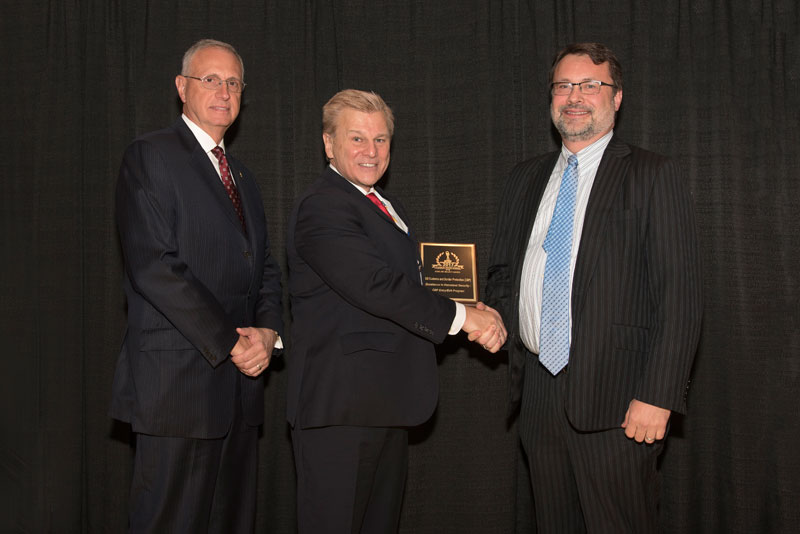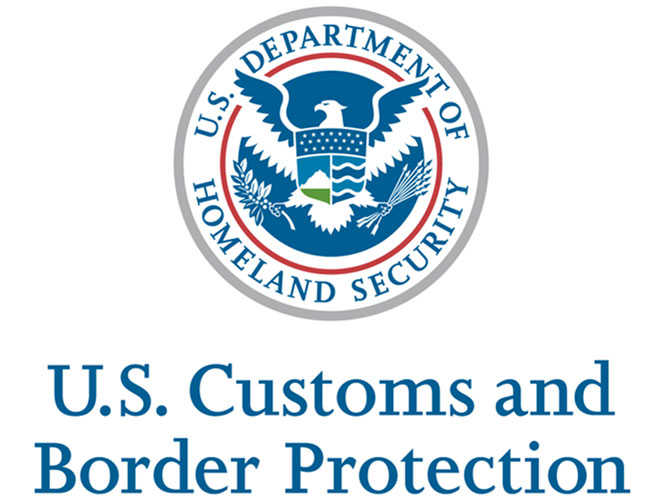World events over the last decade, and even within this last year, have shown that airports are an attractive target to terrorists.
At the same time, the number of international air travelers is increasing.
More than 119 million international travelers arrived in fiscal year (FY) 2016, an almost six percent increase from FY 2015 and over a 35 percent increase since FY 2009.
It is estimated that international arrivals will continue to grow at more than four percent annually.
In this evolving security landscape, finding effective and scalable solutions to increase security and efficiently process travelers is imperative.
The need is critical and will only grow as many airports are already operating at or near capacity.
The Department of Homeland Security (DHS) Science and Technology Directorate (S&T) is helping U.S. Customs and Border Protection (CBP) find new technologies and advanced processes to meet its mission to protect the U.S. homeland.
The DHS S&T Homeland Security Advanced Research Projects (HSARPA), and the U.S. Customs and Border Protection (CBP) Entry/Exit Program, were recently honored by American Security Today for ‘Excellence in Homeland Security,’ at the 2017 ‘ASTORS’ Homeland Security Awards Luncheon at ISC East.

Homeland Security Award’ on behalf of DHS at ISC East.
S&T provides support by evaluating biometric collection technologies, algorithm evaluations, and conducting experiments to identify processes and technology to accurately and efficiently track the entry and exit of traveling persons.
S&T is at the leading edge of helping to solve complex mission challenges by finding new and innovative technology to improve operations.
In fact, JetBlue and other airlines are currently piloting programs at U.S. airports to replace boarding passes with biometric technologies.
These pilots built off the success of prior tests and expanded exit implementations through public-private partnerships.
Under these efforts, CBP is learning best practices for operations and integration into existing airline boarding processes as these processes vary from airport to airport.
As an example of public-private partnerships, NEC Corporation of America is collaborating with with their commercial-off-the-shelf (COTS) NeoFace® Express device and cloud-based NeoFace matching technology, as key facial recognition component of a frictionless biometric exit process in Dulles International Airport.
(Learn More about NEC World’s No. 1 Face Recognition Solution, NeoFace. Courtesy of NEC Corporation and YouTube)
Some of CBP’s technology selections and planning for these pilots were based directly on S&T assessments.
S&T conducted assessments at its Maryland Test Facility as part of its Apex Air Entry/Exit Re-Engineering program (known as AEER), which develops, tests, analyzes and assesses technology solutions.

International Airport Office of Field Operations, (at right), Leon Hayward,
Acting Director, U.S. CBP New York Field Office, accepting a 2017 ‘ASTORS’
‘Excellence in Homeland Security Award’ on behalf of DHS at ISC East.
Dr. Adam Hutter, (at right), accepting a 2017 ‘ASTORS’ ‘Excellence in
Homeland Security Award’ on behalf of DHS at ISC East.
Now that CBP is moving into operational projects, portions of the Apex AEER program are moving into the Homeland Security Research Projects Agency (HSARPA) Port of Entry – People Screening program (POE-PS).
Specifically, the program aims to help CBP innovate international air entry/exit operations by:
- More effectively using new processes and technologies to inspect growing numbers of travelers with limited airport space and staff
- Improving technologies to quickly and easily verify the identity of international travelers during entry/exit
- Making the entire entry/exit process more secure, seamless, intuitive and traveler friendly
Before this pilot could become a reality, POE-PS needed to understand the U.S. airport system.

“Unlike some other countries, U.S. airports were designed only for inspection of international arriving travelers not for biometric checks for outbound foreign nations,” said POE-PS Program Manager Arun Vemury.
“Additionally, most airports are already at capacity and don’t have the space to build-out or expand existing inspection areas.”
“Putting in the wrong solution could not only create longer queues and take more space, but also delay flights and displace airport seating areas and retail operations which keep the airports in business.”
With no standardized airport layout or central management organization, this task becomes even more complicated, as each airport would require an individually tailored solution. Add in the ever-present issues with limited funding, and a restructure program may appear nearly impossible.
However, S&T was built for just this type of mission.
One of the most promising ways to integrate biometric immigration checks into airport operations was to identify technologies and new operational processes that minimize floor space, infrastructure, staffing and delays.
Although the base biometric technologies are not new, they have evolved significantly in the last several years.
The three most widely used applications of biometrics are:
- Fingerprint recognition
- Facial recognition
- Iris recognition
Biometric systems securely record, digitize and store the unique physical characteristics that each of us possess.
(Learn More, courtesy of CBP, Bridget Bosch and YouTube)
Using biometrics for identity verification when entering and leaving the country, for example, allows officers to quickly compare a traveler’s physical characteristics to the original data.
Although driven by complex computer algorithms, the systems empower officers to recognize – at a much quicker pace – people attempting to travel under a different name and/or who pose a threat.
The use of these technologies require a significant amount of testing to ensure they can be integrated into the security approach for CBP.
While a technology may work perfectly, it may not be suited for use in every setting.
To better understand evolving technologies and explore innovative solutions, S&T uses its Maryland Test Facility (MdTF).

Facility (MdTF) Command & Control Room
Located just outside of Washington, D.C., the MdTF has been instrumental in testing and evaluating the technology and processes to optimize entry/exit from U.S. airports.
“The real-world testing simulations have given S&T and CBP the ability to accurately evaluate multiple technologies and processes without negatively impacting the traveling public or putting anyone at risk,” said Vemury.
“The use of the facility also helps keep costs down since we can test more things more quickly without delaying any travelers.”
More that 150 different commercial and government technologies and processes have been reviewed and tested under various conditions and configurations.
Approximately 2,500 volunteers (representing a multitude of ethnicities and cultures) assisted by playing the roles of travelers.
This allowed S&T and CBP to test and evaluate biometric systems and other processes in real-world airport scenarios.
The testing S&T directed at the MdTF has resulted in tangible and actionable results.

with the laws of the United States persons with valid visas who present themselves
for entry. (Image courtesy of CBP)
During the assessments, S&T focused on both technology and the procedures, studying, developing, testing and analyzing findings to determine the validity of the manufacturer’s claims as well as how something works within the overall system.
S&T then disseminated recommendations to CBP for consideration and potential future deployment at airports.
Through this exhaustive process, S&T captured and analyzed important user-experience data.
The results of these evaluations have informed the next generation of technologies and how best to use that technology with future travelers.
“CBP’s partnership with DHS S&T has informed many aspects of our biometric entry/exit transformation efforts,” said Colleen Manaher, Executive Director, Policy, Program Analysis, and Evaluation, Office of Field Operations, CBP.
“We are grateful for our strong relationship with DHS S&T and look forward to continuing our combined efforts.”
(Learn More about how U.S. Customs & Border Protection (CBP) is developing, testing, and promoting the use of facial recognition to improve the traveler experience and maintain U.S. national security. Courtesy of Amazon Web Services and YouTube. Posted on Nov 28, 2017)
Based upon the work that S&T is doing with its partners, the future of international travel to the U.S. looks even safer, more secure and surprisingly efficient.
Why Biometrics for Entry-Exit Management at Airport Passenger Gates?
There are several Congressional mandates that direct the Department of Homeland Security (DHS) to record the arrival and departure of non-U.S. citizens by collecting biometrics.
CBP first established biometric screening procedures based on digital fingerprints for certain non-U.S. citizens in 2004 to secure our borders and ensure that the foreign travelers presenting themselves for admission to the United States are who they claim to be.
CBP has conducted additional tests to evaluate new biometric technologies in multiple environments in FY 2016 to further secure and facilitate legitimate travel.

A biometric exit system has been a greater challenge to implement as U.S. international airports do not have similar entry processing infrastructure for exit processing.
CBP is taking a strategic and measured approach to implementing a biometric exit program by testing and evaluating advanced biometric technology in its unique operational environments.
The test of CBP’s data systems capabilities to support new biometric exit operations builds upon lessons learned from DHS S&T and CBP’s other biometric tests.
DHS is committed to implementing biometric exit in 2018, starting at the highest volume airports.
Identify and close the biographic gaps and enhance the entry-exit systemCBP’s Entry/Exit strategy includes three core pillars:
- Perform targeted biometric operations, and
- Transform the entry/exit process through the use of emerging biometric technologies.
Currently, CBP relies on biometric screening—digital fingerprints and photos—to secure our borders and ensure that foreign travelers presenting themselves for admission to the United States are who they claim to be.


















